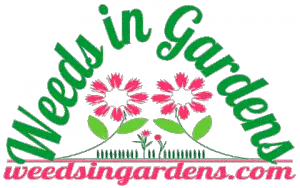When it comes to designing and maintaining a garden, one of the most important decisions a gardener will make is what types of plants to include. Should they choose native plants, which are naturally occurring in the local area and have evolved to thrive in the specific climate and ecosystem, or non-native plants, which come from other parts of the world and may require more specialized care? Both native and non-native plants have their advantages and disadvantages, and the answer will depend on the goals and priorities of the gardener.
Pros of Native Plants
Easy Care: Native plants are adapted to the local conditions and typically do not require much maintenance, such as frequent watering or fertilizing. This makes them ideal for busy gardeners or those who want a low-maintenance garden.
Good for Wildlife: Native plants provide crucial food and habitat for local wildlife, including birds, insects, and other pollinators. By incorporating native plants into your garden, you can help support and protect the local ecosystem.
Disease and Pest Resistance: Native plants are also adapted to the local conditions, which means they are more resistant to local diseases and pests. This makes them less susceptible to damage from pests and less likely to spread invasive diseases to other plants in your garden.
Cost-Effective: Because native plants are adapted to the local conditions, they are often easier and cheaper to grow than non-native plants. This can save gardeners time and money in the long run.
Cons of Native Plants
Limited Variety: Native plants may not be as diverse as non-native plants, which can result in a garden that is not as visually appealing.
Difficult to Find: Native plants can sometimes be difficult to find, as they are not commonly sold at traditional garden centers. Gardeners may need to look for specialty nurseries that specialize in native plants or collect seeds from the wild.
Pros of Non-Native Plants
Wide Variety: Non-native plants can offer a wide variety of colors, shapes, and sizes, which can make for a visually stunning garden.
Readily Available: Non-native plants are often more readily available for purchase, as they are commonly sold at garden centers and online retailers.
Versatility: Non-native plants can be used in a variety of garden styles, from formal gardens to wildflower meadows, giving gardeners a lot of flexibility in their design choices.
Cons of Non-Native Plants
Higher Maintenance: Non-native plants may require more maintenance than native plants, such as frequent watering and fertilizing, as they are not adapted to the local conditions.
Invasive Species: Some non-native plants can become invasive, which means they will spread rapidly and take over an ecosystem, displacing native species. This can have serious environmental consequences, so it is important to research non-native plants before incorporating them into your garden.
Pest and Disease Issues: Non-native plants may also be more susceptible to local pests and diseases, as they have not evolved to resist these threats. This can result in more frequent pest and disease problems in your garden.
In conclusion, whether to choose native or non-native plants for your garden depends on your goals and priorities. Native plants are generally easier to care for, better for wildlife, and more resistant to pests and diseases, but they may not offer as much visual variety. Non-native plants, on the other hand, offer a wide variety of colors and shapes, but may require more maintenance and be more susceptible to pests and
